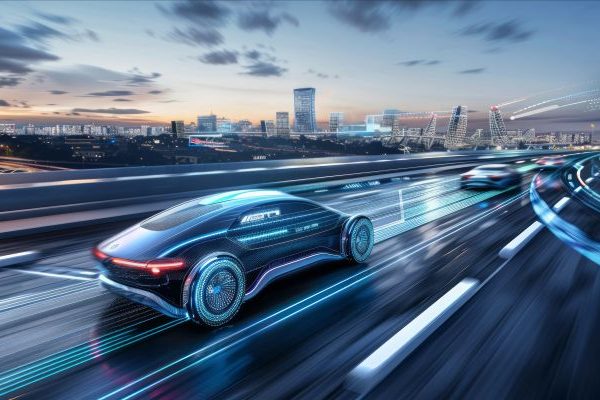With significant advancements in fuel cell technology and hydrogen storage solutions, hydrogen-powered trucks are emerging as a powerful contender for the future of commercial transportation and freight movement. While today’s ecosystem is balancing both battery-electric and hydrogen fuel cell vehicles, the goal is to perfect trucks that can leverage sustainable green hydrogen. Despite this sector being in its early stages, forward-thinking players are pursuing substantial growth opportunities by implementing strategic moves right now.
Frost & Sullivan’s recent webinar, “Fuel Cell Adoption Strategies in North America and Europe: Accelerating the Shift to Zero-Emission Trucking for a Sustainable Future”, delved into this exciting frontier. The discussion explored transformative megatrends, disruptive technologies, innovative business models, and best practices within the hydrogen truck space, offering valuable perspectives from leading industry experts:
Saideep Sudhakar
Growth Expert and Associate Director at Frost & Sullivan
Marshall Martin
Growth Expert and Program Manager at Frost & Sullivan
Shyam Sundar
Growth Expert and Industry Analyst at Frost & Sullivan
Gain perspectives from these industry experts by clicking here to access the recorded session of the webinar.
You can also click here to access our latest analysis revealing lucrative growth opportunities emerging in the fuel cell hydrogen vehicles domain.
During this discussion, our panelists identified key strategic imperatives for achieving long-term growth:
Fueling the Fuel Cell Trucking Transformation: The commercial trucking industry has traditionally been slow to adopt zero-emission alternatives — hindered by high costs, inadequate infrastructure, and concerns over resale value. However, this landscape is rapidly evolving as strict emission reduction targets and government incentives push industry players towards lower-emission solutions. Both battery-electric and hydrogen fuel cell trucks are now key contenders in the race to a greener future. How is your team leveraging the transformative forces driving the hydrogen vehicles industry to build a robust growth strategy?
Advancing Green Hydrogen Technologies for a Sustainable Future: In regions like North America, 90-95% of hydrogen currently produced for fuel cell vehicles is ‘grey hydrogen’, which emits significant carbon dioxide. As a result, the industry is strategizing a shift to green hydrogen, produced using renewable energy. Although this transition is a costly and time-consuming affair today, technological disruptions hold the key to making it seamless and profitable in the long run. Are you innovating towards the development of viable green hydrogen trucks, ensuring your success in this ecosystem?
Harnessing Global Incentives and Policies: Countries like the United States, Canada, Germany, The Netherlands, China, India, and Japan are introducing significant investments and regulatory frameworks to support fuel cell adoption in vehicles. From billions in tax credits to direct government funding for hydrogen projects, these incentives are paving the way for the widespread adoption of fuel cells, offering a promising future for the industry. How are you taking advantage of the favorable regulatory environment for fuel cell adoption in vehicles?
Adopting OEM Best Practices from Trucking OEMs: In Europe, original equipment manufacturers (OEMs) like Stellantis and Daimler are leading the charge, with Stellantis already producing fuel cell vans and Daimler initiating customer trials for its Mercedes-Benz GenH2 trucks. Such advancements are encouraging competing automakers to transition to fuel cell technology across light, medium, and heavy-duty truck segments. In China and North America, similar progress is being made, with players aiming for hydrogen vehicle applications across urban delivery and long-haul transportation. How is your organization implementing best practices and enhancing your growth pipeline in this domain?
To know more about emerging growth opportunities in the hydrogen fuel cell vehicles industry, click here.
“Although today’s heavy-duty trucks account for only a small share of vehicles in operation, they are responsible for a much higher share of emissions across all vehicles. Currently, what we see is that many countries are implementing stringent emission reduction targets as well as government incentives to provide the much-needed impetus for a shift to lower emission alternatives.”
– Saideep Sudhakar– Growth Expert and Associate Director at Frost & Sullivan






